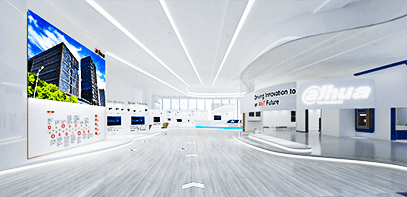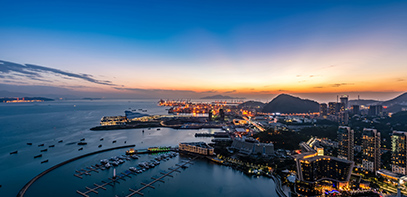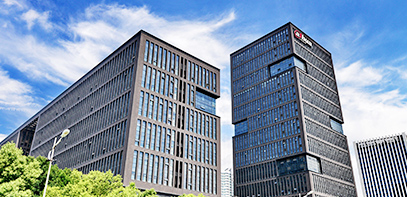Overview
The Alcázar of Segovia, whose origins date back to the 12th century, is one of the world’s most iconic castles, a monument rich in history and majesty, recently listed by National Geographic as the most beautiful in Europe.
Over the centuries, it has been home to twenty-two kings and has witnessed crucial events that shaped the history of Spain and the world. Its imposing silhouette, rising over the Eresma valley, has been a symbolic icon of the Old City of Segovia, a UNESCO World Heritage site, and has transcended borders, inspiring Walt Disney in the creation of the famous Snow White castle, leaving an indelible mark on the imagination of generations. Historical figures such as Isabella the Catholic, Christopher Columbus, and Philip II walked its halls, where epic battles, palace intrigues, royal weddings, and other surprising events took place. Every corner of its walls holds centuries of history and secrets that continue to fascinate.
This castle, which has served as an impregnable fortress, royal residence, crown archive, and even state prison like the Bastille or the Tower of London, was also home to the Royal College of Artillery, where science and the military merged to mark milestones in scientific history, such as the formulation of the Law of Definite Proportions by Louis Proust or the first military flight in history.
Today, with over 700,000 visitors annually, the Alcázar is one of the most visited monuments in Spain.
To safeguard its valuable legacy and improve the visitor experience, the monument has implemented an advanced intelligent monitoring solution developed by Dahua Technology. This comprehensive system includes access control, perimeter protection, behavior analysis, and thermal monitoring, ensuring both the security and preservation of this iconic castle.
Challenges
Implementing an advanced technological solution in a historical monument like the Alcázar of Segovia posed a series of complex challenges. This medieval castle, which houses centuries of history and valuable works of art, requires constant protection, without interruptions, and without compromising its aesthetics or structure.
One of the main challenges was managing the large flow of visitors, which exceeds 700,000 people annually. The goal was to ensure that the distribution of tourists was carried out evenly throughout the day, avoiding crowds that could affect both safety and the building’s conservation. Additionally, access control had to be rigorous, preventing intrusions outside of visiting hours and protecting the heritage against vandalism.
The vulnerability of the Alcázar's wooden roofs, especially in the attics, was another critical challenge. With incidents such as the Notre Dame Cathedral fire in mind, an advanced thermal detection system was required to continuously monitor these sensitive areas, detecting any temperature anomalies that could pose a fire risk.
Likewise, there was a need to improve visitor assistance, facilitating help in case of emergencies, especially in hard-to-reach areas like the Tower of John II. The challenge was to integrate this technology discreetly so as not to alter the castle’s historic appearance.
Finally, the need to modernize the entire video surveillance and communications system in a building with walls up to six meters thick and without conventional phone coverage was one of the biggest challenges. The system had to operate efficiently, ensuring a reliable and continuous signal throughout the site.
Solution
The security and control solution implemented at the Alcázar of Segovia was designed to meet the strict protection, capacity management, and conservation needs of this historical monument. Through an advanced technological infrastructure, both indoor and outdoor areas are covered, ensuring the preservation of the heritage and the safety of the thousands of visitors it receives annually.
To improve visitor flow and capacity control, intelligent cameras with artificial intelligence technology have been installed, allowing real-time monitoring of the building’s occupancy. These cameras, along with an advanced ticketing software, segment access into 30-minute intervals, adjusting ticket sales based on available capacity and ensuring a smooth experience for visitors.
Regarding staff safety and access to restricted areas, the Alcázar uses a biometric access control system. This ensures effective protection of the most sensitive areas of the building, offering precise entry and exit records without compromising employees’ comfort.
To prevent intrusions and inappropriate behavior, a sophisticated video surveillance system consisting of 130 high-resolution cameras has been deployed, strategically placed at key points. These cameras, together with area barriers and line-crossing sensors, sends real-time alerts when a visitor crosses established boundaries in high-value heritage areas, ensuring the protection of works of art from potential acts of vandalism.

One of the most significant improvements is the use of PoE (Power over Ethernet) in the entire video surveillance network. This has considerably reduced the number of cables, eliminating the need for high-voltage electrical installations. Operating on low voltage minimizes electrical risk, increasing building safety and facilitating maintenance.
Additionally, having all systems from the same manufacturer, Dahua, has helped avoid compatibility issues and ensured seamless integration, centrally managed through DSS PRO software, which acts as the system’s brain. This solution not only optimizes interoperability but also simplifies staff training, significantly improving operational efficiency.
Fire protection has been one of the most critical areas. Fourteen thermal cameras have been installed in the attics and roofs, areas that are vulnerable to fire. These cameras allow continuous temperature monitoring and provide early alerts if anomalies are detected. This system is backed by a network of ionization and barrier smoke detectors, connected to a redundant pump system that ensures a quick response to any fire risk.

Visitor assistance has also been improved. In key areas, such as the ascent to the Tower of John II, SOS points equipped with video intercoms have been installed, allowing tourists to request immediate assistance. These devices are directly connected to the control center, ensuring a quick response when needed.

Finally, an essential aspect was integrating all these systems without compromising the castle’s aesthetics. The cameras and other devices have been designed to remain inconspicuous, maintaining the historic appearance of the Alcázar. This allows visitors to enjoy the beauty of the monument without visual interruptions and with the peace of mind of being in a secure and well-managed environment.
Results
The implementation of these technological solutions has transformed the Alcázar of Segovia into a benchmark for advanced management in the security of historical monuments. Thanks to capacity control and efficient visitor distribution, their experience has been enhanced, avoiding overcrowding and ensuring the preservation of the heritage.
The video surveillance and thermal monitoring system has raised the monument's protection levels, allowing for quick responses to potential incidents and significantly reducing risks associated with vandalism and fires.

The integration of advanced technologies, along with specialized staff training, has resulted in more efficient and secure operations. The security team now has real-time information, enabling them to act swiftly in any situation.
"We believe that optimal solutions, such as those offered by Dahua, together with trusted local providers and installers, and well-trained staff, undoubtedly lead to exceptional results and allow all our visitors to enjoy the Alcázar with complete safety," says Antonio Moreno Pérez, Head of Technology, Security, and Sales at the Alcázar of Segovia.
This project is an excellent example of the application of Dahua's intelligent solutions in a cultural setting, opening up opportunities for replication in similar scenarios.













